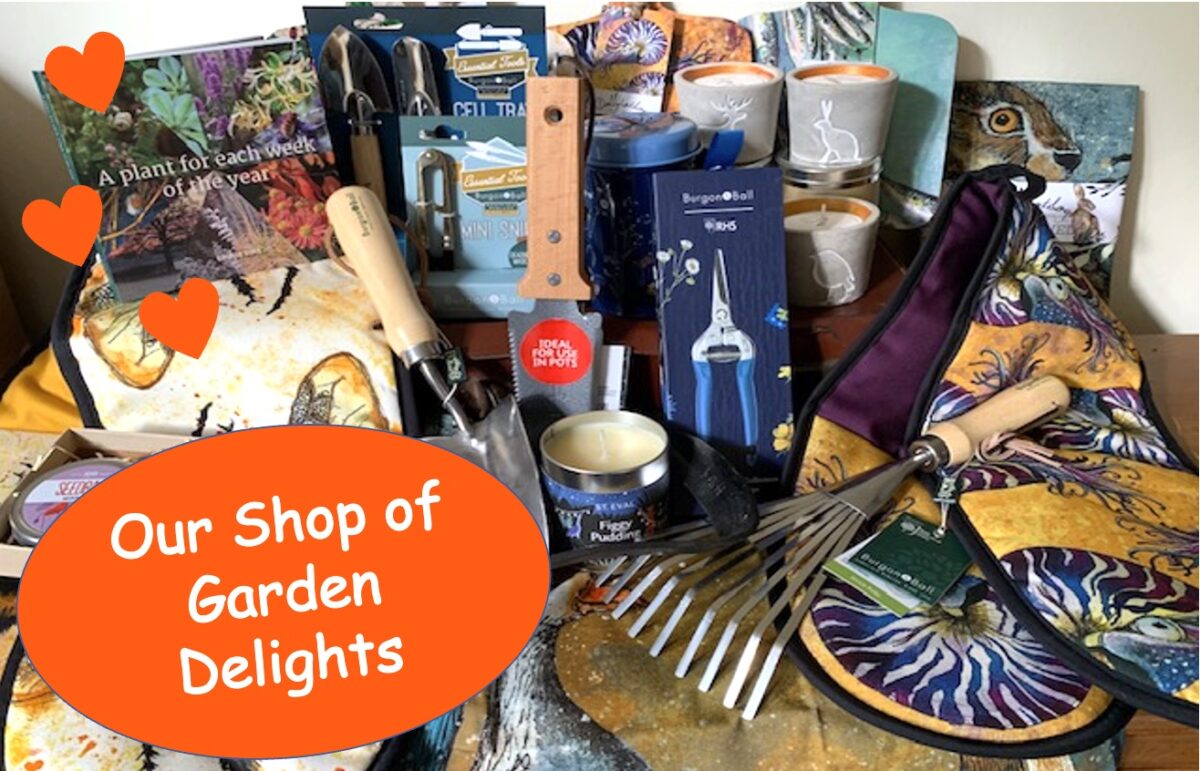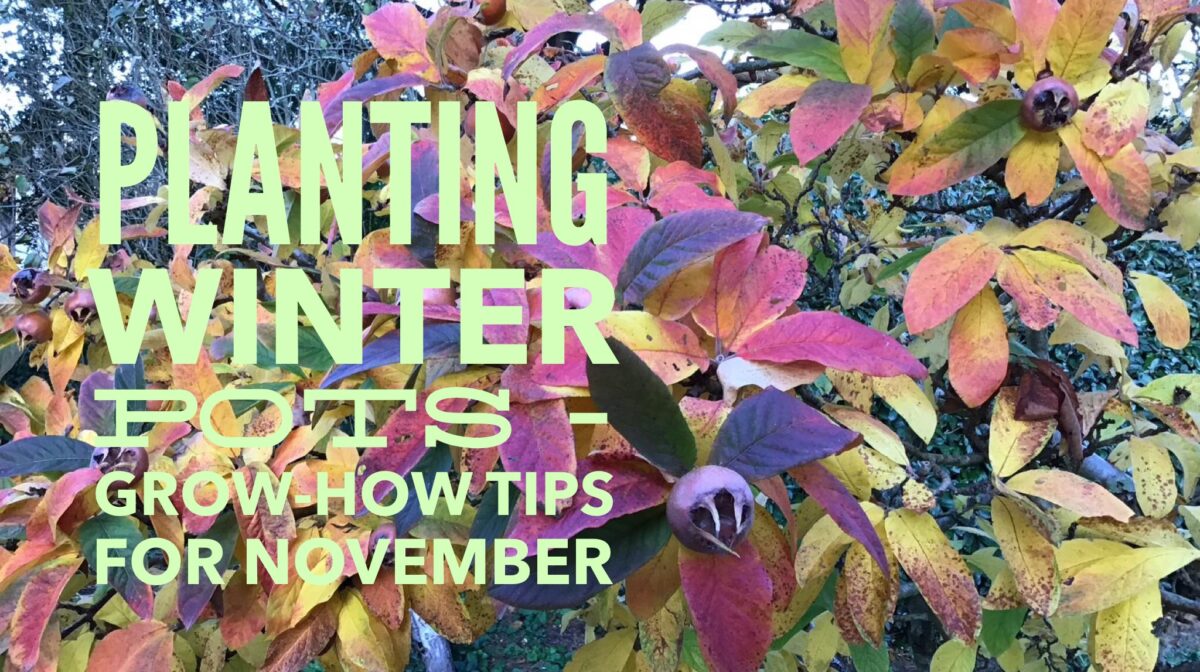
Let’s be honest – once we’re deep into November, there is less temptation to get down and dirty in the garden. But if you wrap up warm and step out there, I can assure you that you will find satisfying jobs that will give you more of a cosy glow than tidying the crockery cupboard or watching daytime telly. Here are a few ideas to get you started:
PLANTING UP A WINTER POT
Just because the summer razzmatazz is over, it doesn’t mean you can’t have some vivid colour by your door to cheer you through the cold months.
There are also sorts of plants with which to fill a frostproof pot. If it’s a windy corner, I would advise not going for a plastic pot, which could blow over in harsh gales.
And place it where you want it BEFORE adding the compost – let’s avoid ricked backs as well, shall we? (says the woman who ricked her back only last week carrying a shower door – don’t ask). Choose somewhere that will get as much of that watery low winter sunlight as possible, and mix grit through the compost for drainage – very few plants enjoy sitting in cold soggy soil for weeks on end – can you blame them?! Standing the pot on little ceramic pot feet or just bits of brick will help with drainage too.
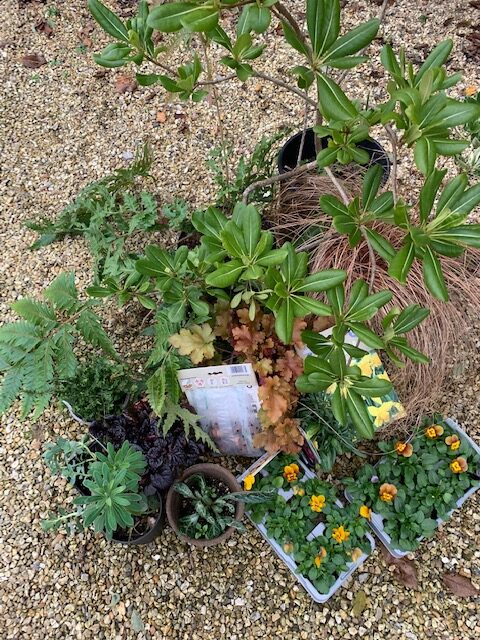
Now for the fun bit. Pop some early daff or iris bulbs in first, then plant the soil up thickly because most plants really slow up during the winter, and if you don’t put in loads of things, your pot will look ‘thin’ for ages. Flowers can be a little scarce, though pansies, violas, heathers and cyclamen can give a good sprinkling of welcome blooms.
The main impact will be from coloured or evergreen leaves and stems, and perhaps bright berries and there are plenty out there; a small shrub like variegated Euonymus or Cornus, winter-scented Daphne or Sarcococca, coloured Hebe, or berried Pernettya – any of these would provide a taller centre to your arrangement.
Fill it round with things like ivies, Ajuga, Heuchera, Carex, hart’s tongue fern (if it’s a bit shady), Cineraria……look round the garden centre and have some fun! I’ll tell you what – that dark-leaved curly kale looks AMAZING in a winter pot; or if you prefer, evergreen herbs like rosemary and sage have a gentler look as well as being handy for hearty winter meals.
Your pot won’t need feeding (hurray!) because all the plants will be a bit dozy, but do water it in dry spells. And what a lovely sight it will be to come home to, after a long cold day out in the elements – it will glow ‘like a good deed in a naughty world’!
PROTECTING THE POND-LIFE
From the point of view of encouraging wildlife to a garden, a pond is a wonderful addition to any garden, whether it’s a miniscule tub or a half-acre expanse and late autumn is a good time to give it a bit of attention. If possible, try to net it to keep out the falling leaves which will decompose in the water and foul it up. For our little town-pond, my husband has made a simple frame out of chicken wire to place over it, and then lift off again in late winter. If this is not possible, just scoop or net out as many of the fallen leaves and debris as you can.
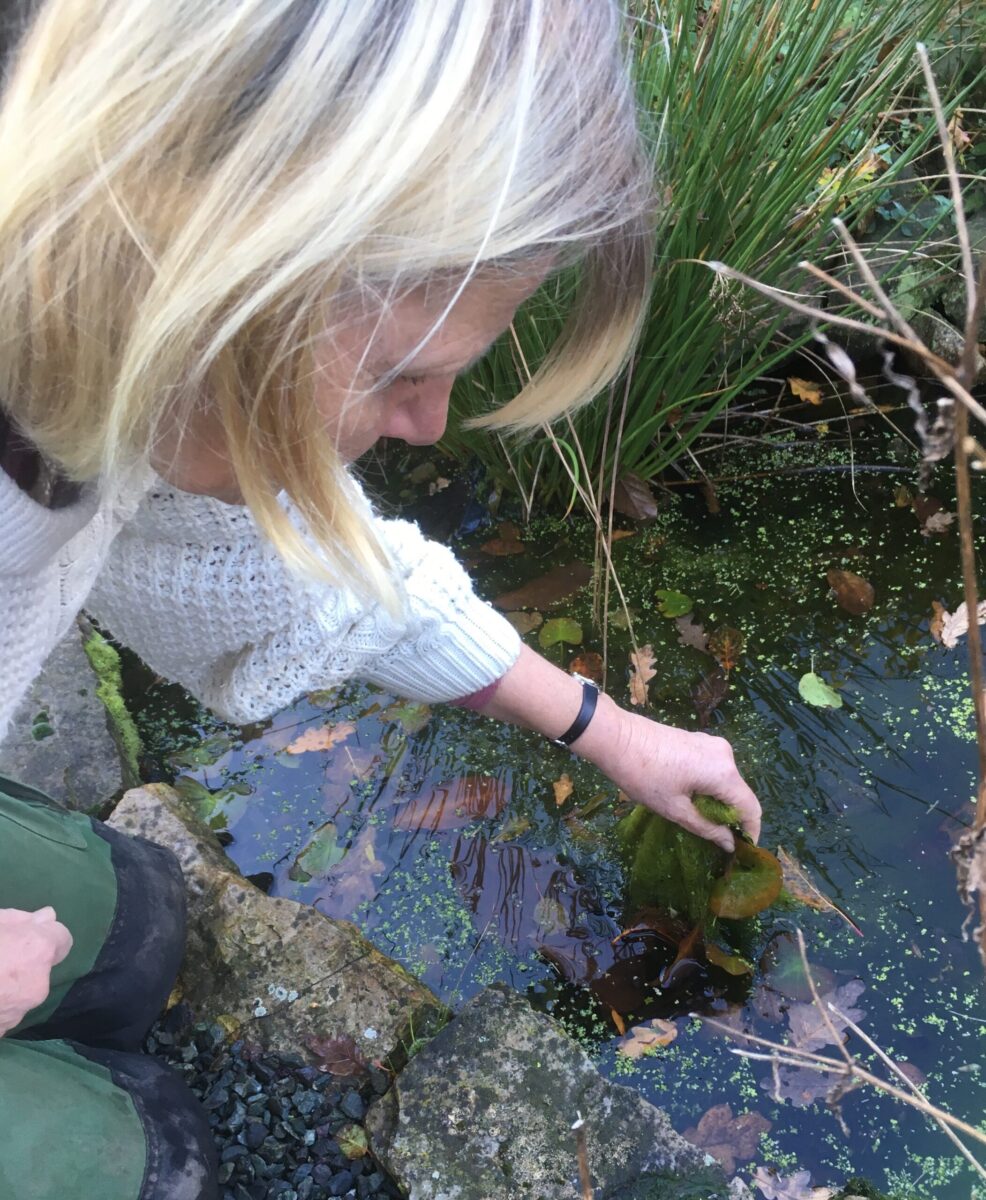
Wildlife ponds need weeds and oxygenating plants to provide a healthy habitat for the thousands of big and small creatures that live there. But these plants can quickly get out of hand (and don’t I know it!), so thin them out now by pulling out floating weeds and twirling blanketweed round a stick to scoop it out. Also yank out some of the sludge at the bottom of the pond; this can become horribly thick and deep very quickly. But don’t take all of it. Disgusting as it looks and smells, it’s actually full of nutrients, and removing it all would hugely upset the natural chemical balance of your pond.
Lastly, if the pond freezes, oxygen levels for fish can become depleted, but smashing the ice can be too much of a shock for them, so having something in the water like an old football is quite a good idea. It can delay freezing, and be easily lifted out to provide a hole in the ice.
MAKING THE VINE FINE
Now that vines are going into dormancy, you can prune them easily without fear of the cuts oozing sap. Most people use what is called the ‘rod and spur’ system of growing vines, whereby you have encouraged one or more main stems (‘rods’ or ‘cordons’) from which side-branches (‘spurs) grow and will bear the fruit. So in late November or early December, cut back these spurs to one or two fat buds from the main stem.
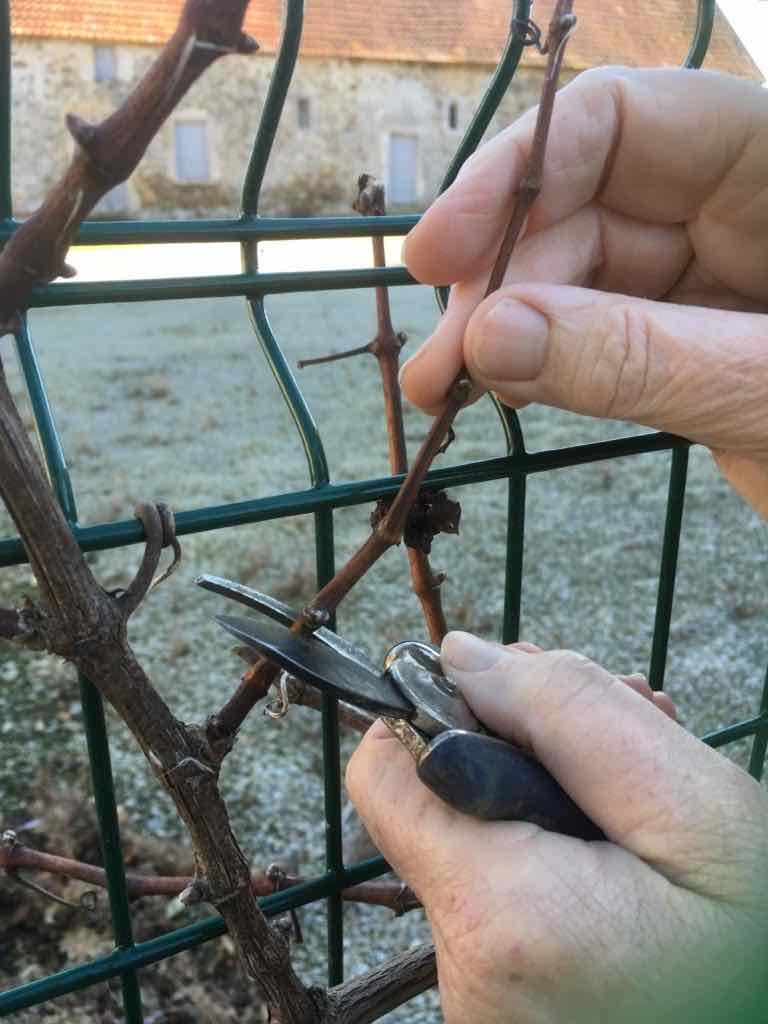
Dont be namby-pamby about this; vines are aggressive growers when they’re happy, so trim away merrily until you have a neat arrangement of firmly-fastened stems covered in knobby little bits that will carry next year’s vintage.
GARDENING SHORTS
* If you’ve been planting trees and shrubs, potted or bare-rooted, do put some protection round them from rabbits, squirrels and even deer. We have found plastic spirals work really well, and are pleasingly re-usable once the tree has established sufficiently not to need it.
* DO take time to sharpen hoes, shears and sécateurs. I know it’s a drag but it makes such a difference to their efficiency – and less effort is needed by you when you use them!
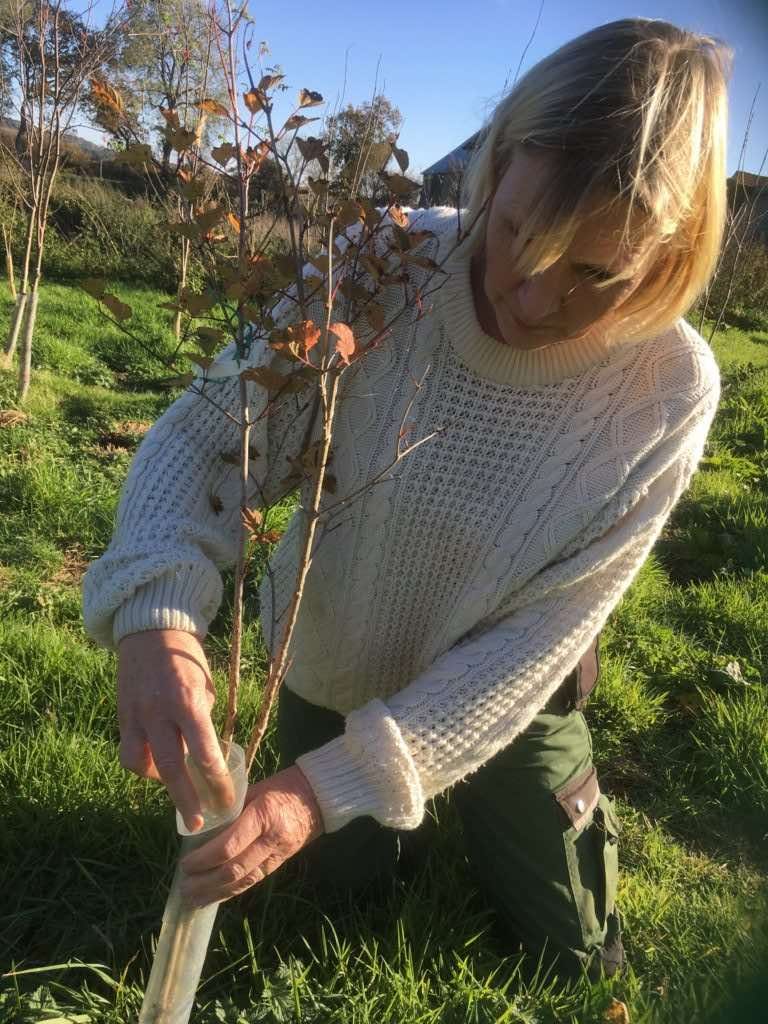
* If you like hyacinths in a bowl inside, I’m afraid you’ve probably missed the boat as far as Christmas is concerned, but what about starting some now to put some cheer into cold old January? Buy the specially-prepared bulbs, plant them shallowly in bulb fibre, water them and then put the bowl somewhere dark and cool. Once the shoots are up about 2 inches, bring the pot somewhere light, but still cool if possible, and watch for the scented blooms.
NB If you’re not already a subscriber and you’d like a bit more gardening chitchat from the3growbags, please type your email address here and we’ll send you a new post every Saturday morning.
